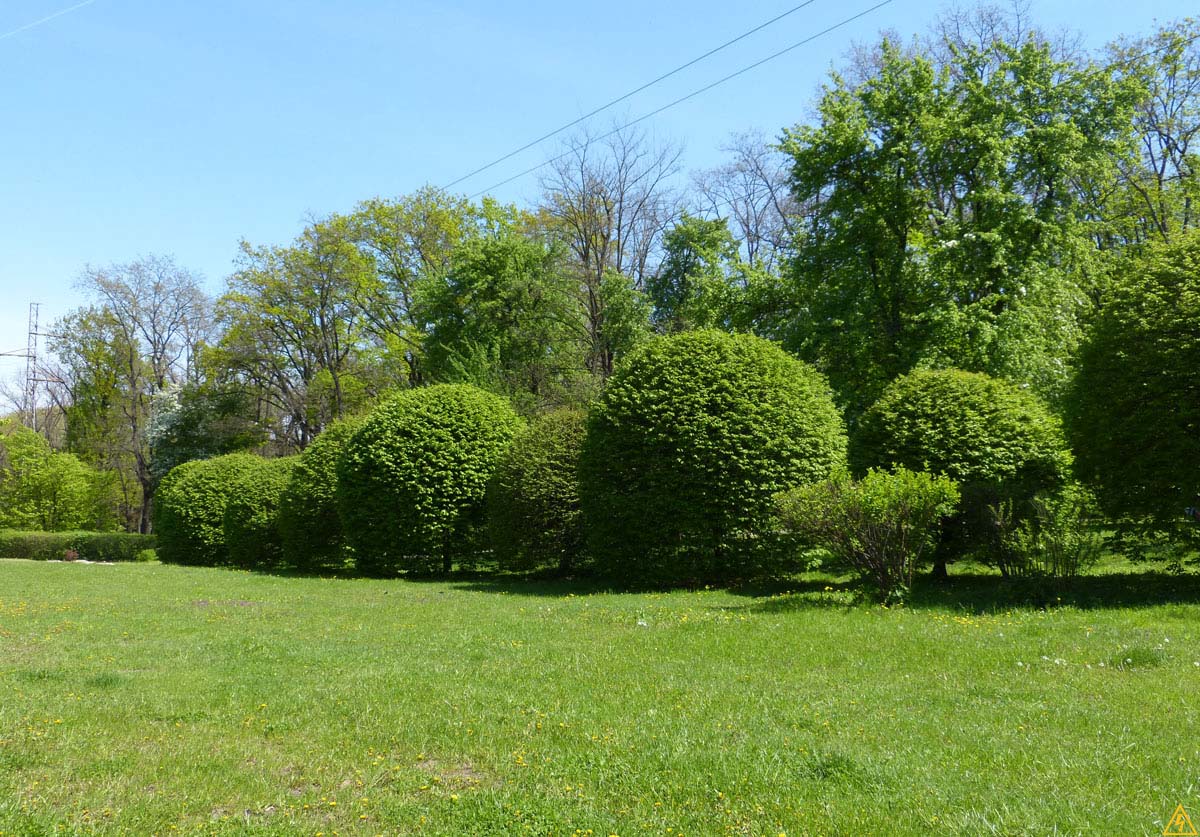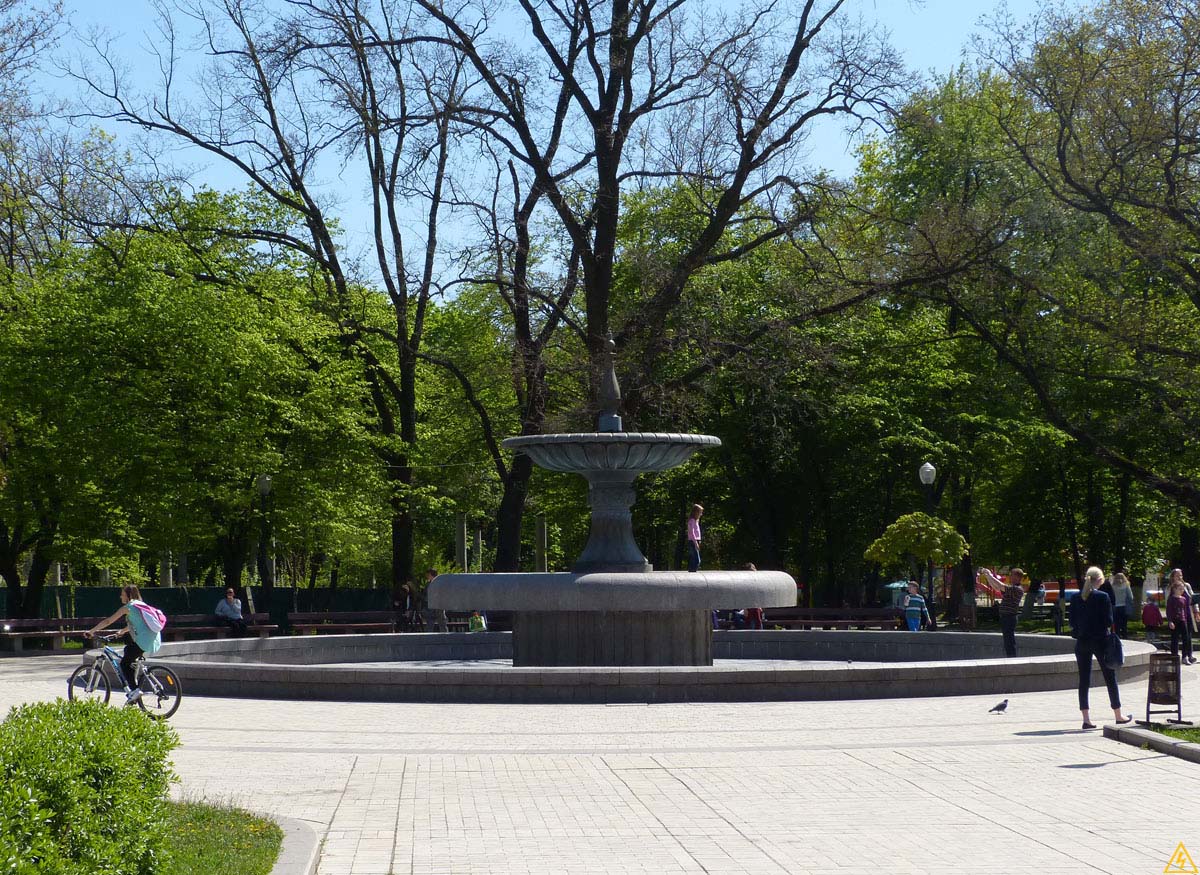The creation of a forest in the Goloseevo area began in 1631 under the leadership of Peter Mogila, Archimandrite Kievo-Pecherskaya Lavra. Goloseevsky Park was created in 1957, and in honor of Maxim Rylsky, who in 1951-1964 lived and worked in a building on Sovetskaya Street located next to the park, it was renamed in 1964. Many Kiev residents were involved in beautifying the park, but the greatest contribution to this work was made by the engineer Pestryakov, as well as the architects Ladny and Khlebnikov. At that time, in the northwestern part, the park was adjacent to the rapidly developing 40th Anniversary of October Avenue (now Goloseevsky Avenue), in the northeastern part it bordered on the village of Myshelovka, and in the southern part it reached the building of the Ukrainian Agricultural Academy.
The area of Maxim Rylsky Park is 140 hectares, but in fact, over time it merged with the natural forest. Young thujas, junipers, walnuts, Crimean pine and svidina were planted here. Since ancient times, the Goloseevsky forest has been known for rare species of flora. Among the unique plants that grow here are snowdrops and barnacles. During the creation of the park, they tried to preserve the natural beauty of the forest as best as possible. For example, the fences in the park are not made of iron, but of multi-tiered vegetation that harmoniously fits into the natural environment of the forest. The landscape of the park was created using modern design methods at that time, which also helped preserve the pristine nature of this area. Currently, Maxim Rylsky Park is one of the most favorite recreational places for the townspeople living next to it.
In 1960, Maxim Rylsky Park was given the status of a monument of landscape art of national significance. According to its layout, the park is divided into several separate sections – certain areas of regular and landscape styles, a forest park, as well as natural forest spaces. Thus, a section of the regular style can be seen between the central entrance to the park and the Molodezhny pavilion (destroyed as of 2018). Formal specimens of hornbeam, weeping willow, common and silver spruce, and pyramidal poplar are planted here. Most of the park’s territory is occupied by hornbeam oak forest. However, here you can also find linden, common ash, maples, hazel, euonymus and glod. As for forested areas, oak trees are planted there together with young hornbeam and some types of shrubs. Closer to the exit from the park, white acacia and birch grow – species that require more light. Landscape-style areas in Maxim Rylsky Park are presented in the form of small lawns, alleys of birch, silver maple and northern oak. Oriental plane tree, sycamore and beech also grow here.
In 1965, a monument to participants in the defense of Kyiv in 1941 was unveiled here, dedicated to the feat of the Red Army commanders and sailors of the Dnieper military flotilla. The author of this memorial was the architect Suvorov. He made a granite stele 5.5 meters high and put forward the idea of installing it on a special stylobate.
The main attraction of Rylsky Park is the Orekhovatskaya Valley and a cascade consisting of four ponds. Near the first pond there are attractions for children and a summer playground for sports games, as well as a boat station. Near the second pond you can see fishermen hiding in the reeds, because fishing and swimming are prohibited here, as evidenced by special signs. There was also a summer cinema (as of 2018 abandoned) and a restaurant called Dubki (as of 2017 it was under renovation). On the third pond, vacationers can feed wild ducks that gather in huge flocks. The fourth pond is the largest in size. On its shore there is a boat and catamaran rental station, as well as a cafe, go-karts and a children’s playground. This pond is located at the other end of the park, not far from Maxim Rylsky Street. In the central part of the park there is a whole sports sector, which has pavilions for playing chess and billiards, as well as dance floors – now on the site of all this there is a rope park. On the left side of the main entrance to the park there was also a Green Theater – a small area surrounded by numerous benches, but it has not survived to this day… The monument to Maxim Rylsky is installed at the main entrance to the green zone. Its opening took place in 2003; it is a bust of the writer made of bronze, mounted on a granite pedestal. After the appearance of the monument, the park itself was reconstructed.
Where is Goloseevsky Park named after Maxim Rylsky?
Goloseevsky Prospekt, 94










